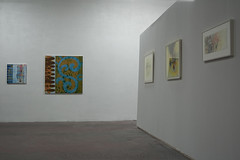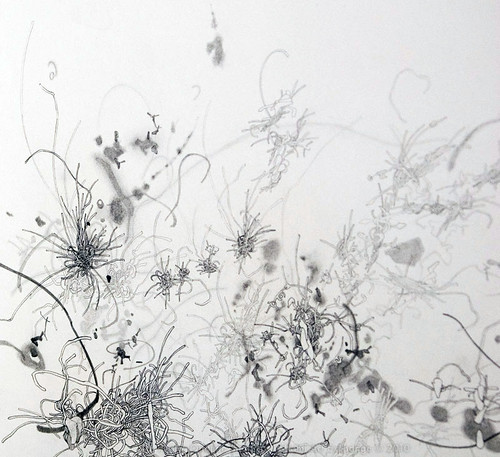Three-by-Six ("3×6")
 Three-by-Six (“3×6”) is a summer media arts event in Miami, Florida; a cross between an art show and a film festival. On each selected evening, six curated short video, film, performance, sound, or other time-based combination works will be presented.
Three-by-Six (“3×6”) is a summer media arts event in Miami, Florida; a cross between an art show and a film festival. On each selected evening, six curated short video, film, performance, sound, or other time-based combination works will be presented.
Three-by-Six (“3×6”) will be held on the last Thursday of the month during the summer of 2010 (Wynwood Art District’s Last Thursdays). Artlab33 | Art Space will provide a forum for submission and curation of media artworks and build a community of participation, review, and response for both audience and practitioner. Our address is: 2085-B NW 2nd Avenue, Miami, Florida 33127.
The program title, Three-by-Six (“3×6”), refers to the structure of the program:
• Three events
• Three curators/jurors
• Three themes
• Six pieces per event
• Six minutes or less per piece
• Sixty minutes long event
No limitations are placed on what type of work can be submitted except: it must be able to be projected digitally, performed, played via sound system, or some combination, each piece is limited in length to 6 minutes, and no more than 6 will be selected for any one event.
Electronic files and support materials can be submitted via email (up to 5 MB’s), CD, DVD, or internet download. Entries with technical problems need to be resolved by the artist or will be withdrawn or rejected. Terms of submission include permission to exhibit both live and online (whether or not selected for a particular event), permission to video tape performances, and permission to include selected work in a compilation DVD. No materials will be returned. Other than these uses, the artists will retain all rights.
—–
Three-by-Six (“3×6”) Submissions:
Works must be: video, film, sound, performance, slideshow, or combination. Anything that can be projected or performed in real-time, no longer than six minutes in length. Shorter can be better!
SUBMISSION DEADLINES:
Program #1 – 8 May, 2010
Program #2 – 12 June, 2010
Program #3 – 12 July, 2010
EVENT SHOWING DATES :
Theme #1 : #phrasesihate (a twitter trending topic) – on 27 May, 2010
Theme #2: Likin’ – on 24 June, 2010
Theme #3: Obsess’n – on 29 July, 2010
We will follow up if we need more information or clarification. Your permission to post your work online, exhibit at the event, and compile into a DVD is required. Electronic files and support materials should be downloadable through a URL that you provide, emailed under separate cover to printcollection@gmail.com, or post mailed to:
Miami Art Exchange
Attn: Artlab33 | Art Space – “3×6”
PO Box 1462
Fort Lauderdale, FL 33302
Please answer all of the following questions to the best of your ability.
Required with your submission:
Your Name:
Your valid Email:
Your phone (if residing in Florida):
Title of Work *
Description of Work * Media, Emphasis, Major Points
File Size (# of kb’s, mb’s, or gb’s) *
Number and Types of Files *
Submission Delivery Method *
• URL (http://…. )
• Email (under 3MB to printcollection@gmail.com)
• CD/DVD (over 3MB through postal mail)
URL for Downloading
Permission to Post Work Online, Show and/or Videotape at Event, and Compile in DVD for Distribution * Required; Artist Retains Ownership
• I grant my permission for these uses.
Do you have other materials you would like us to be aware of? URL’s, Significant Projects or Exhibitions, Other Examples of Your Work?
Please submit by the correct deadline to be considered for each individual event date.


















